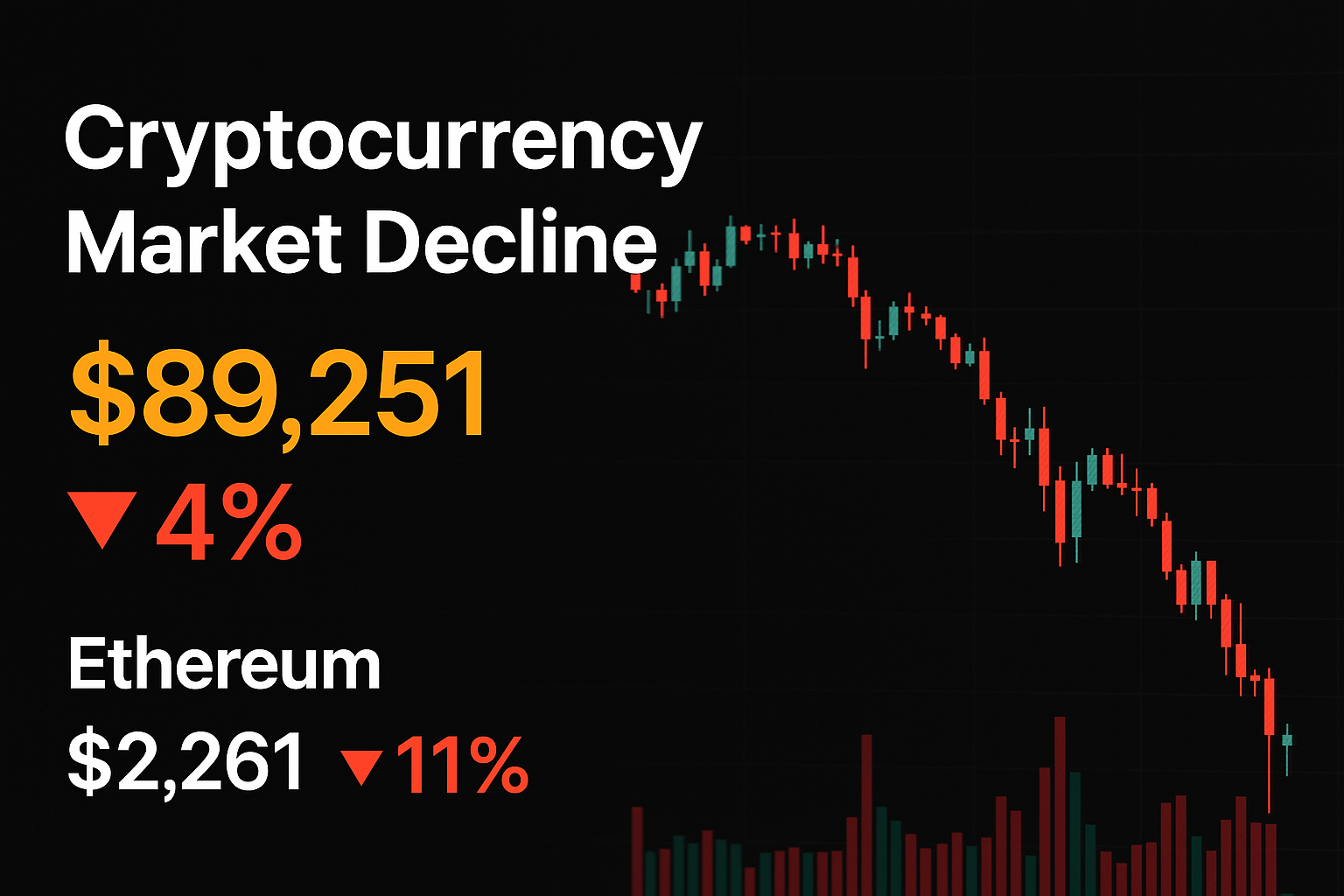The cryptocurrency market has once again reminded investors of its inherent volatility. Over the past few days, the market experienced a sharp downturn, triggered by a combination of geopolitical tensions and tightening economic policies across major economies. This downturn wiped out billions in value across the digital asset space.
Bitcoin and Ethereum Lead the Drop
The two largest cryptocurrencies by market capitalization, Bitcoin (BTC) and Ethereum (ETH), were not spared.
-
Bitcoin saw a drop of roughly 4%, bringing its price down to around $89,251.
-
Ethereum suffered an even steeper decline, plummeting 11% to about $2,261.
While these percentages may seem moderate to seasoned crypto investors, the absolute dollar value lost is significant, especially given the size of institutional holdings and the growing integration of crypto into broader financial portfolios.
Market-Wide Impact
The decline wasn’t limited to BTC and ETH. Altcoins across the board posted losses, with some tokens falling by more than 15% in just 24 hours. The total cryptocurrency market capitalization dropped by approximately 8-10%, reflecting a broad loss of confidence and risk-off sentiment among investors.
This market pullback erased recent gains made during the bullish momentum seen earlier in the quarter, highlighting the fragility of investor sentiment in the face of macroeconomic shifts.
Key Factors Behind the Decline
1. Geopolitical Tensions
Recent geopolitical developments, particularly in Eastern Europe and the Middle East, have introduced new layers of uncertainty. Investors often respond to such events by moving capital into perceived safer assets like gold or the U.S. dollar, resulting in capital outflows from riskier assets like cryptocurrencies.
2. Economic Policy Shifts
Major central banks have hinted at prolonging high interest rates, or even reintroducing rate hikes, to combat persistent inflation. This reduces liquidity in the market and discourages speculative investments, including crypto.
3. Regulatory Pressure
Regulatory developments in both the U.S. and Europe are also contributing to market uncertainty. Ongoing lawsuits, delayed ETF approvals, and proposed taxation frameworks have all played a role in chilling investor enthusiasm.
Market Outlook: Volatility Ahead?
While the current decline may seem alarming, it’s important to remember that such pullbacks are not unusual in the crypto space. Historically, the market has rebounded from deeper corrections, often coming back stronger.
That said, the near-term outlook remains cautious:
-
Investors are watching for signals from the Federal Reserve and other central banks on monetary policy.
-
Geopolitical developments will continue to exert pressure, especially if conflicts escalate.
-
Technical indicators suggest that BTC and ETH may still face resistance at current levels, with potential further downside if support levels break.
The recent decline in the cryptocurrency market is a reflection of broader macroeconomic and geopolitical uncertainty. While the correction has been sharp, it is also part of the market’s natural cycle. Long-term investors may view this as an opportunity to reassess positions or accumulate assets at lower prices, while short-term traders should remain cautious and informed.
Volatility is the norm in crypto not the exception.




